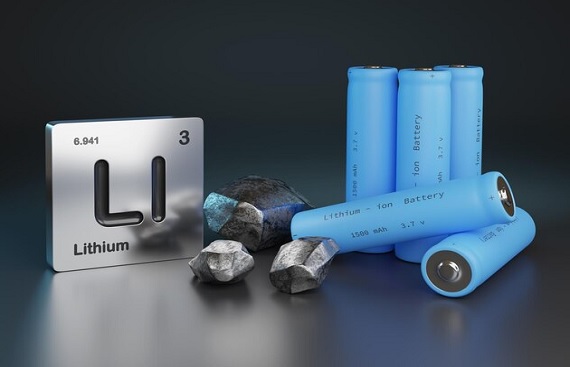How Lithium-ion Battery Recycling Shapes Our World

As we strive for technological expansion, lithium-ion batteries have developed more necessary for powering electric vehicles (EVs), energy storage systems (ESS), and consumer electronics (CE). But, their limited lifespan presents a notable challenge, encouraging the immediate requirement for sustainable disposal solutions. Recognizing the environmental threats joined with these batteries, which include dangerous organic solvents and heavy metals, highlights the critical need for careful end-of-life board. This delves into the world of recycling lithium-ion batteries, with the goal of reducing damage to the environment while getting the most out of used batteries.
The Future of Lithium Battery Recycling
By reusing, repurposing, and recycling, our goal is to extend the lifespan of batteries and reduce waste. Experts predict important development in the recycling of lithium batteries, with a focus on methods such as hydrometallurgy, pyrometallurgy, and direct recycling due to their cost-effectiveness. It is important to handle old batteries responsibly as more industries adopt lithium-ion batteries. By accepting strategic recycling methods, economic incentives align with environmental conservation, adopting a round economy. This structures the importance of responsible waste management, imagining a future where lithium-ion batteries contribute to environmental sustainability and promote beneficial practices for businesses, economies, and the planet.
At present, hydrometallurgy and pyrometallurgy stance out as generally used recycling methods, while straight recycling is progressively obtaining importance. The diversity in battery cathode compositions, including
Rahul Shonak, COO of Nexzu Mobility, says, "EVs are the future when it comes to a sustainable mobility solution. The current mobility model is one that has a drastic impact on the environment, and it is only logical to adopt innovations that not only take care of mobility requirements but also environmental concerns".
Lithium-ion Battery Recycling in the Age of Electric Vehicles
As electric vehicles (EVs) become extra popular, recyclers target to decrease the environmental influence of manufacturing new batteries by repurposing valuable materials like lithium, nickel, and cobalt from the past ones. Some efforts also emphasis on recovering materials like copper or graphite to encourage energy-efficient technologies and minimalize chemical usage compared to competitors. However, building a strong lithium-ion battery recycling industry comes with its own challenges. Firms must constantly increase their facilities, adapt to evolving battery technologies, and conform with emerging industry standards. Also, the performance of these batteries classically declines after around ten years of use, which confuses the recycling process.
Lithium-ion batteries (LIBs) have changed sustainable energy and storage technologies, gathering major interest and helping as an essential power source for electric vehicles, sustainable energy storage systems, and consumer electronics. However, alongside their growing adoption, there are usable concerns regarding their environmental footmark. The reduction of natural resources and improper disposal of these batteries present considerable challenges, featuring the importance of adopting responsible recycling methods Recycling lithium-ion batteries is really important. It helps the environment and makes sure we use natural resources better.
The Advanced Stages of Lithium-Ion Battery Recycling
Recycling lithium-ion batteries requires several important steps. Each step is necessary to turn old batteries into materials that can be used again for something else. The procedure commences with the collection of used batteries from various sources like consumer electronics, electric vehicles, and energy storage systems. Consequently, batteries go through sorting, accurately classifying them based on their chemistry and condition to make sure appropriate recycling methods. Trained professionals then dismantle the batteries to extract components carefully.
The material recovery stage employs advanced recycling technologies to extract sought-after materials like cobalt, lithium, nickel, and other valuable minerals from spent batteries. Innovative methods such as hydrometallurgical or pyrometallurgical techniques have converted recycling practices, posing amplified proficiency, enhanced rates of material recovery, and maximized environmental impact. These technologies signify the head of sustainable battery recycling, leveraging scientific and engineering developments to completely harness the potential of these valuable resources.
Challenges and Innovations in Lithium-Ion Battery Recycling
Lithium-ion battery recycling presents important challenges through various fronts. The complexity of battery chemistries needs wide research and development to enrich recycling processes for diverse battery types. Security concerns are also prominent due to potential threats in handling and processing these batteries. Also, the absence of uniform recycling infrastructure adds further complexity. However, with the universal push for sustainable solutions, collaborative efforts including government groups, industry leaders, and academic institutions are paving the way forward.
These partnerships encourage new ideas and improvements in recycling. They want to make recycling easier, keep it safe, and build a good system to handle more and more used batteries.
The Impact of Lithium-Ion Battery Recycling
Recycling lithium-ion batteries isn't just good for the environment. It also helps scratch down on carbon emissions, decreases the need to dig up new resources, and stops pollution from old batteries being thrown away wrong. Plus, recycling batteries can create jobs and set up a system where we use materials over and over again, which helps protect the planet for the future. Because recycling lithium-ion batteries is very important, leaders around the world are making rules and policies to help. These rules inspire people to dispose of batteries responsibly and promote recycling. By sharing these good examples, we hope to inspire others to do the same and work together to protect the environment. These rules will also help the battery recycling industry grow, bringing benefits for the environment and the economy.
Enclosing
In simple terms, recycling lithium-ion batteries is actually important for helping the environment, using resources wisely, and making sure businesses and economies benefit. If we work together and use smart recycling methods, we can imagine a future where these batteries help keep the planet healthy and support sustainable practices worldwide.
